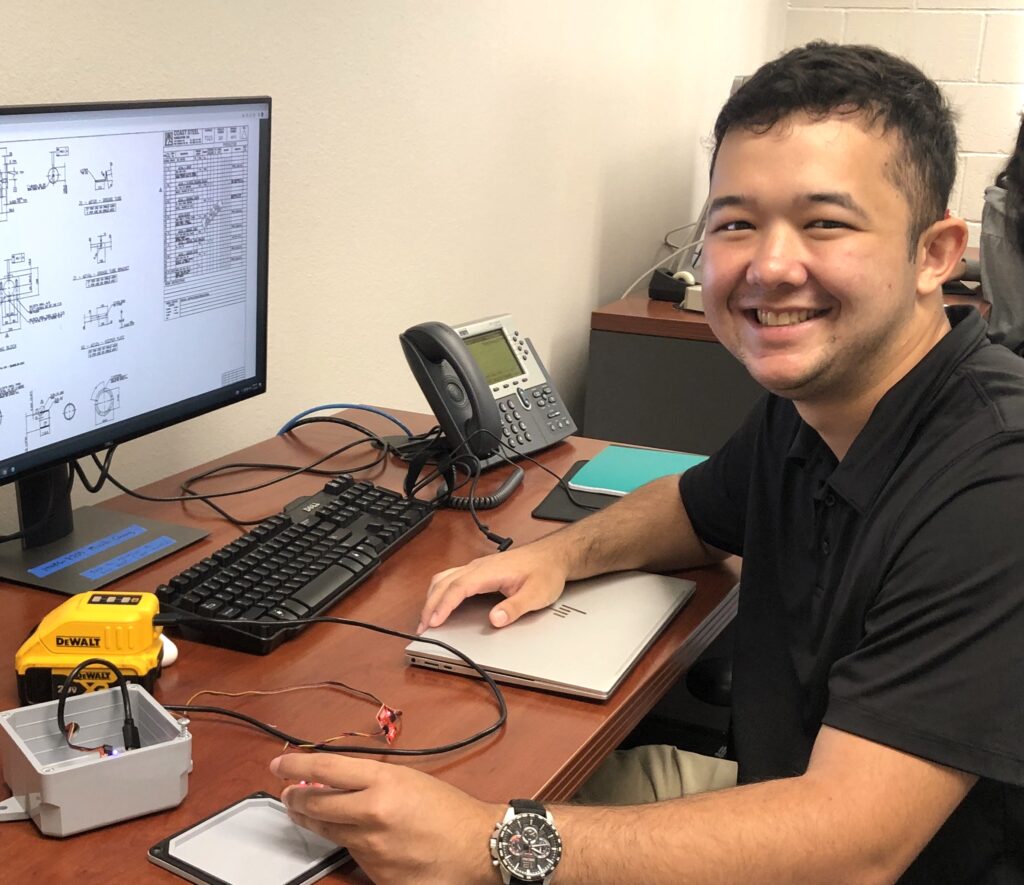
Micah was born in Hilo, Hawaii, where he graduated from Waiakea High School and went on to begin college at the University of Hawaii at Hilo. Currently he is pursuing a bachelor’s degree in Mechanical Engineering at the University of Hawaii at Manoa. During college, he has found a passion for design and has joined a robotics club competing in the University Rover Challenge. He is excited to gain more hands-on engineering experience and explore different career opportunities. In his free time, Micah enjoys camping, fishing, and BBQing with friends and family.
Home Island: Big Island Hawaii
High School:
Institution when accepted: University of Hawaii at Manoa
Akamai Project: Development and Prototyping of Gemini North’s Lateral Guide Roller Monitoring System
Project Site: Gemini Observatory, Hilo, HI
Mentors: Ross Megargel & Chas Cavedoni
Project Abstract:
The Gemini North telescope is currently testing their dome rotation system because of repeated failures in the Lateral Guide Roller (LGR) system. The LGR system utilizes bearings to guide the bogie system, which supports the weight of the dome along the dome track. The failure of the LGR has led to constant repairs of the dome rotation system as well as lost operation time. The dome rotation system is difficult to monitor as the majority of the system is enclosed by insulation materials, thus a sensor system was needed to reliably monitor both the LGR and the bogie system. A sensor package was developed and modeled using Autodesk Inventor to design housings and mounting points for the sensor package. A prototype sensor system was manufactured utilizing available equipment at Gemini North’s facilities and locally sourced hardware excluding the sensor components. The sensor package included an accelerometer and a distance sensor to record displacement of the bogie as well as the LGR location in relation to the bogie. This process was redeveloped thoroughly, inevitably resulting in the conclusion that the available sensors were inadequate to collect accurate data due to unexpected noise. However, the accelerometer demonstrated the capability to determine unexpected vertical movement; this will be useful in the future to monitor the movement of the leaf springs, which will have a direct correlation to the LGR failure. Additionally, CAD models were created for the redesign of the LGR with the intent to make the LGR arms easier to repair and without the need to remove the entire LGR assembly. The redesign of the LGR also incorporated finite analysis and a cost analysis that were used together to determine which prototype would be the most effective. Overall, the bogie system will be better monitored and maintained in the future.